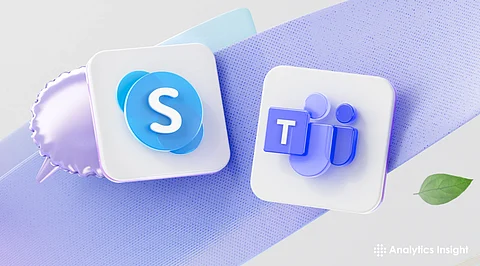

Microsoft announced the retirement of Skype on May 5, 2025, a choice that signals the ascendance of Microsoft Teams. This transition, which will affect those using Skype's free offerings and people with paid subscriptions, requires a thorough understanding of the tactics involved and the implications it incorporates.
While any change can understandably create a sense of uncertainty, Microsoft has expressed its purpose to facilitate smooth migration, ensuring that users hold their crucial connections and conversational histories.
Microsoft's strategic decision to consolidate its communication services underneath the Teams platform aligns with a broader enterprise trend towards integrated environments. Teams isn't simply an alternative choice to Skype; it represents a significant improvement. It presents a comprehensive suite of tools that expands beyond basic communique capabilities. Its integration with the Microsoft 365 ecosystem creates a unified space for collaboration, enhanced productivity, and seamless connectivity. Corporations particularly benefit from the platform's superior functionalities.
The migration from Skype to Teams has been designed with user accessibility in mind. Here is a detailed, step-through-step outline of the manner:
The preliminary step includes downloading the Microsoft Teams software. This can be achieved by visiting the official Microsoft Teams website, where customers can choose the version compatible with their working device (Windows, macOS, Android, or iOS). The installation process is straightforward, requiring minimal technical expertise.
Upon launching the Teams software, customers might be prompted to log in. Critically, they need to utilize their existing Skype login credentials. This action will automatically transfer contacts and chat records, eliminating the need for manual records migration. In cases wherein the Skype account is related to a Microsoft account, Teams will recognize this association, thereby streamlining the system. In the occasion of a forgotten password, the "Forgot Password" option affords a clear pathway for credential recovery.
Teams will synchronize Skype conversations and speak to lists after successful login.Users can access their preceding discussions by navigating to the "Chat" phase. A search feature is available to locate particular contacts or messages. While synchronization usually takes place promptly, a quick delay may be skilled.
Once the migration is complete, users can explore the diverse capabilities presented through Teams. This includes the potential to send messages, voice and video calls, and participate in ongoing discussions. During the transitional period, Team customers can preserve communication with those still using Skype, ensuring uninterrupted connectivity.
A more established and strategic method is necessary for agencies transitioning from Skype for Business.
Establish a devoted mission team comprising IT professionals, project managers, and departmental leaders.
Clearly outline the project scope, detailing person numbers, timelines, and goals.
Determine the coexistence strategy for Skype for Business and Teams, and select the appropriate migration pathway (both slow or immediate).
Consider the upgrade path of both simple and pro.
Conduct comprehensive pilot testing with a pick-person group to perceive and resolve any ability issues.
Establish hybrid connectivity among on-premises Skype for Business servers and the Microsoft 365 environment.
Migrate customers to TeamsOnly mode, adhering to Microsoft's professional documentation.
Decommission on-premises Skype for Business servers upon successful migration completion.
Ensure compatibility with the Phone System inside Teams and coordinate PSTN connectivity via Microsoft Calling Plans or Direct Routing.
Develop a complete communication approach to tell users about the transition.
Implement tailored training programs to facilitate consumer adoption and proficiency.
Consider acquiring expert assistance from providers, which includes Tata Communications.
Critical Considerations for On-Premises Skype for Business:
Ensure proper Azure AD synchronization.
For individual customers, Microsoft Teams Free provides a robust opportunity to Skype, presenting middle chat and communication capabilities alongside superior capabilities like meeting web hosting and network engagement. Users can seamlessly switch their contacts and conversations by logging in with their existing Skype accounts.
The transition from Skype to Microsoft Teams represents a natural development inside the ongoing evolution of virtual conversation. While the retirement of a familiar platform might also begin to cause concern, Microsoft's commitment to a seamless migration process, coupled with the improved capabilities of Teams, guarantees a positive outcome. This shift is not simply a change of software but an embodiment of a greater green, collaborative, and forward-looking communique paradigm.
